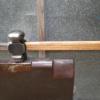-
Posts
1,683 -
Joined
-
Last visited

brianbrazealblacksmith replied to Glenn's topic in Blacksmithing, General Discussion

brianbrazealblacksmith replied to tom6289's topic in Anvils, Swage Blocks, and Mandrels

brianbrazealblacksmith replied to Glenn's topic in Blacksmithing, General Discussion

brianbrazealblacksmith replied to Glenn's topic in Blacksmithing, General Discussion

brianbrazealblacksmith replied to brianbrazealblacksmith's topic in Metal Sculpture & Carvings

brianbrazealblacksmith replied to new guy's topic in Tools, general discussion

brianbrazealblacksmith replied to Grafvitnir's topic in Blacksmithing, General Discussion

brianbrazealblacksmith replied to Grafvitnir's topic in Blacksmithing, General Discussion

brianbrazealblacksmith replied to new guy's topic in Tools, general discussion

brianbrazealblacksmith replied to new guy's topic in Tools, general discussion

brianbrazealblacksmith replied to brianbrazealblacksmith's topic in Blacksmithing, General Discussion

brianbrazealblacksmith replied to divermike's topic in Blacksmithing, General Discussion

brianbrazealblacksmith replied to brianbrazealblacksmith's topic in Blacksmithing, General Discussion

brianbrazealblacksmith replied to brianbrazealblacksmith's topic in Blacksmithing, General Discussion
